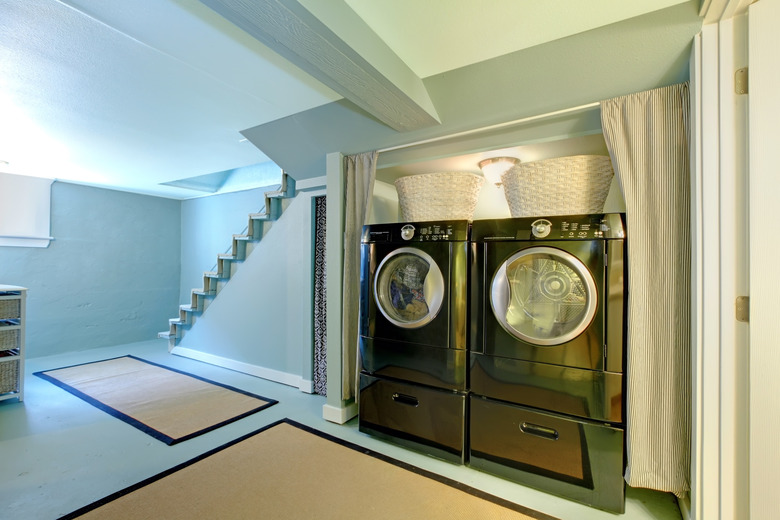How To Vent Sump Pumps
We may receive a commission on purchases made from links.
Sometimes, installing a sump pump requires nothing more than a hole in the basement floor that it can sit in. A few plumbing hookups and a source of electricity are all you need. In some cases, however, sump pumps must have a gasproof cover over the pit. If so, you'll need to make sure your sump pump is properly vented.
Why a Cover?
Why a Cover?
Sometimes, a sump pump cover is optional, but at other times, it's required. If you have radon gas under your basement, you need a cover to prevent the gas from building up in your home. A cover is also a good idea where mold is an issue. An open sump pit often holds water, draining it only when the water reaches a certain level. If the water in the pit evaporates before that happens, it increases the humidity in your home and thereby the likelihood of mold problems.
Now is a good time to dispel the common myth that you need to cover your sump pump because the pit may contain sewage. This is true of ejector pumps, whose job it is to move sewage and wastewater from below-ground bathrooms to the sewer line. Your sump pump, however, is designed to move floodwater or water that seeps into your basement during heavy rains. It is not designed for nor should it be used for moving sewage or waste from your home. If you find waste in your sump pump pit, you need a plumber yesterday.
What Does the Vent Do?
What Does the Vent Do?
The vent on your sump pump performs two crucial functions: letting air in and letting air out. Being open to the outside allows radon gas and other gasses inside the sump pit to escape into the atmosphere rather than building up inside your home. The vent also pulls in air when your sump pump runs and drains the water it contains. Without airflow to replace the displaced water, a vacuum would form, and your pump wouldn't be able to move the water.
Installing a Vent
Installing a Vent
The first step to installing a sump pump vent is to figure out where to run the piping. Ideally, the vent will go from the pump to the roof of your home. In some places, it's legal to patch into an existing plumbing vent that already runs to the roof. Other areas require the sump pump to have its own separate vent. In this case, the vent pipe is sometimes routed straight outdoors and then up the outside of the home.
Sometimes, sump pump vents need only run from the pump to ground level like a basement clothes dryer. This only works when there is a safe place to vent the gas. You don't want to pull toxic gases out of the sump pump and then release them again right next to your kitchen window.
After mapping out the path they will take, pipes are joined together and routed as needed to reach the vent. A hole is then drilled on top of the sump pump cover, and the end of the vent pipe is placed securely in the opening.
Take a Pass on the DIY
Take a Pass on the DIY
Although the concept isn't difficult, venting a sump pump is a job best left to the pros. You're dealing with potentially toxic gases, and a leaking vent simply will not do. Sump pump venting is also subject to some specific building codes that a contractor already knows and understands.
The job gets more complex if you have a deep basement as well. If the vent pipe gets too long, it will become necessary to install a fan along with the vent piping to keep the gases moving in the right direction. This can be a tricky job, as the fan needs adequate support and just the right amount of airflow to avoid working too hard and overheating.
References
- Upgraded Home: Does a Sump Pump Need To Be Vented?
- Ask the Builder: Sewer Gas From a Sealed Sump Pump
- International Association of Certified Home Inspectors: Inspecting Sump Pump Covers
- Eyman Plumbing Heating & Air: What's a Plumbing Vent Pipe and How Does It Work?
- Plumbing Dynamics: How Does a Plumbing Vent Work?
